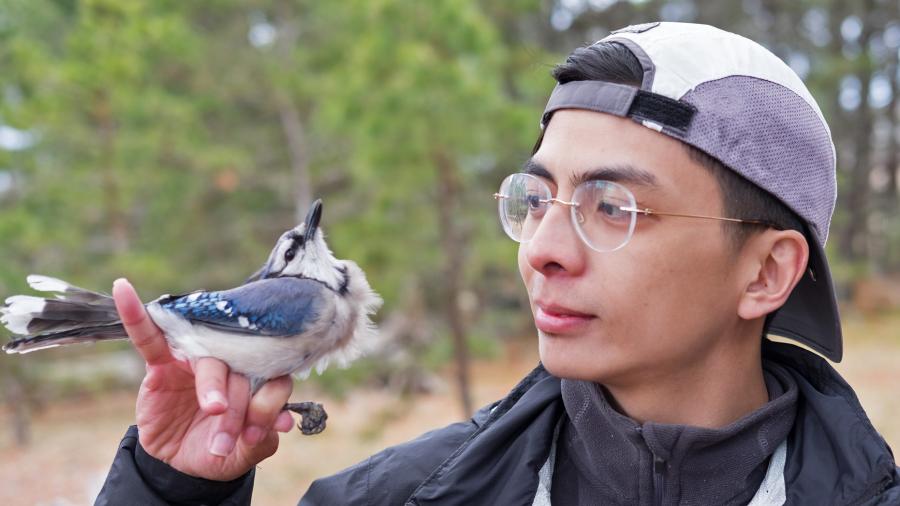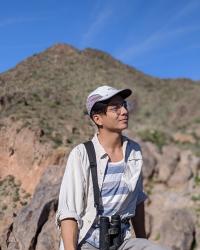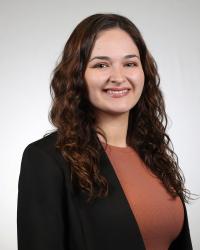Souls of SOLS: highlighting graduate student stories

Jason Lacson, a fifth-year PhD candidate studying animal behavior
The research that goes on in the School of Life Sciences spans a huge and fascinating variety of subjects. The graduate students who make up SOLS are no less diverse or interesting, arriving at their respective research from different places and with different passions. Here, we recognize a handful of these graduate students, their work, and what motivates them to pursue it.
Jason Lacson – Animal Behavior Program
In North America, male birds are singers who tend to come in striking blues, yellows, reds, and oranges. Females, on the other hand, come in humbler browns and greys, and stay relatively quiet.
Most bird researchers explain those differences by saying that males must show off and compete to attract a female, while females don’t have to work so hard. Because of those assumptions, researchers usually only study male birds when investigating the evolution of traits like color and song, as they don’t think females have any use for such traits.
Jason Lacson, a fifth year PhD candidate, sees that as a “long-standing bias,” which he hopes to help address: “I think that my work is part of a larger sort of investigation to understand –– basically, what I would consider a whole half of the equation. Because if you want to study really any trait in animals, I think it’s important to study it in both sexes.”
Lacson’s studies the differences in coloration and song between males and females of a species called the Bullock’s oriole –– one of the few bird species in North America in which females are known to sing as much as (or even more than) males –– to try and understand what prompts them to communicate beyond attracting mates or defending territory.
“I’m researching Bullock’s orioles that are already paired up, so they’re not attracting mates anymore. And from what I’ve observed, they’re very rarely territorial... My hypothesis is that they’re mainly just communicating to each other to coordinate breeding activities.”
Lacson tests that hypothesis through field work he conducts at the Hastings Natural History Reservation in Monterrey County, California, which is funded by the Williams Simes Research Fund. There, he records what activities (like leaving the nest or feeding their chicks) males and females in a pair are performing when they sing, to try and understand why they are communicating.
Lacson also tries to understand the reason behind coloration differences by investigating the hormones responsible for giving birds their color. Hopefully, his research will help convince others of what Lacson is now convinced: if you want to understand a species' evolution, you must study both sexes.
Baylee Edwards – Biology and Society Program, Biology Education Research track
It's common to think that religion and science can't coexist, but Baylee Edwards, a second year PhD student, wants to correct that idea.
“A lot of the tensions that people think exist between religion and science... don’t actually have to exist... When you factor in... the idea that science can’t really answer questions about whether a higher power exists, just believing in a higher power definitely does not discount you from accepting evolution.”
Edwards conducts research investigating how the perception that religious people do not belong in science affects student learning in biology courses. In the master’s research she conducted at ASU, which was recently published in CBE–Life Sciences Education, she specifically studied Christian students’ experiences. She found that though most Christian students anticipated being judged by their peers, if they did end up sharing that they were Christian, they were hardly ever actually judged. While that’s a happy finding, it raises questions about why Christian students are afraid to share their identity in the first place.
Edwards is continuing with her PhD to help answer that question and others like it. In addition to working as an instructor for the Embryo Project Encyclopedia, she continues to work on multiple biology education research projects.
Edwards came to this subject after struggling to resolve the tensions between religion and science herself, as “someone who was not religious growing up but started to become religious in college.”
"I started to really wonder how students who had a strong religious background wrestled with those tensions in class, because even as someone who didn’t have a strong background in religion, I felt those tensions and it weighed on me.”
Edwards’ research should encourage scientists to make biology classrooms more inclusive and interrogate their own beliefs about religion and science.

